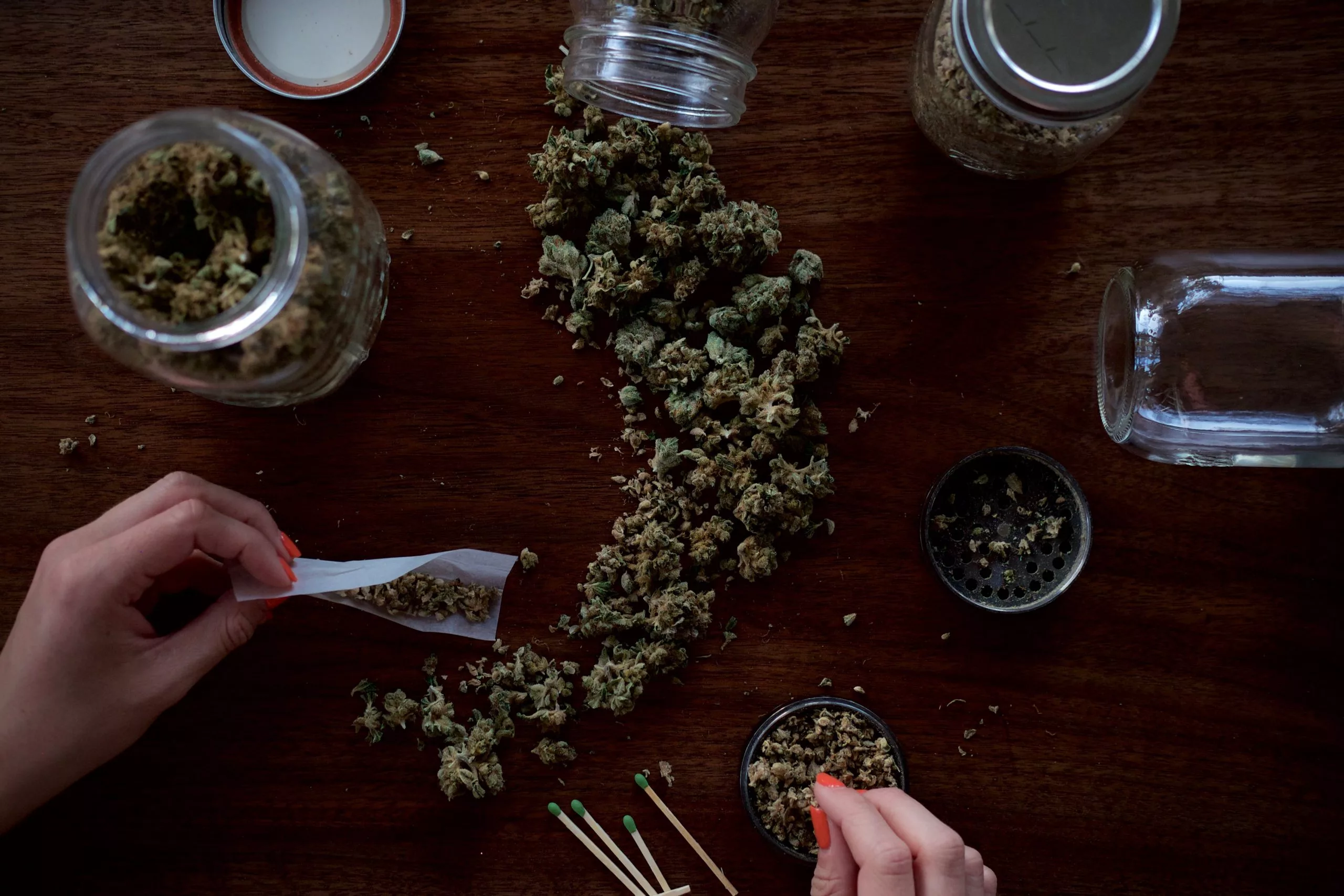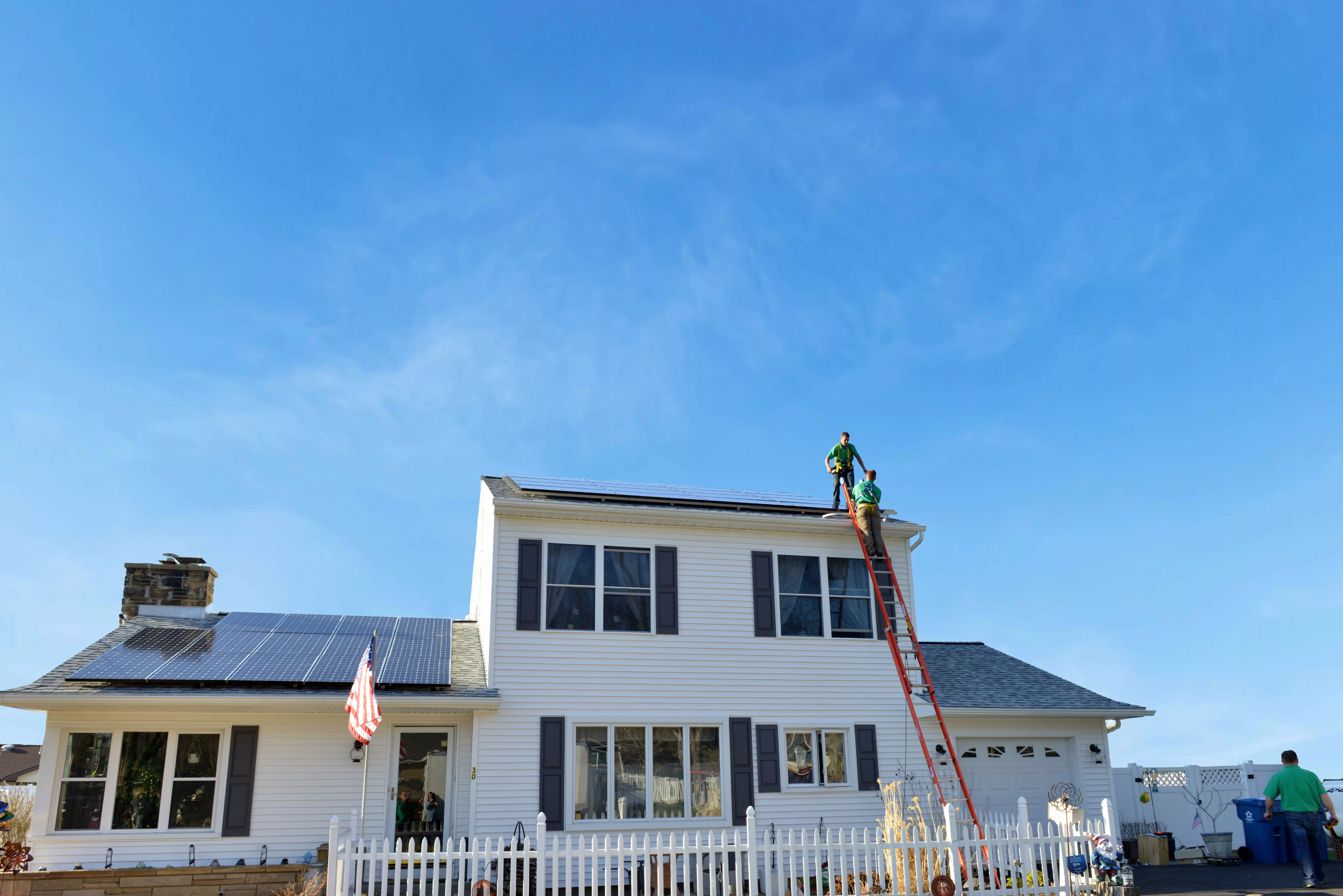“The growing policy-reform movement is a broad church. It includes everyone from ganja-smoking Rastafarians to free-market fundamentalists and all in between. There are socialists who think the drug war hurts the poor, capitalists who see a business opportunity, liberals who defend the right to choose, and fiscal conservatives who complain America is spending $40 billion a year on the War on Drugs rather than making a few billion taxing it. The movement can’t agree on much other than that the present policy doesn’t work.”
— Ioan Grillo, El Narco: Inside Mexico’s Criminal Insurgency
“Once something is no longer illicit, punishable, pathologized, or used as lawful basis for raw discrimination or acts of violence, that phenomenon will no longer be able to represent or deliver on subversion, the subcultural, the underground, the fringe, in the same way”
― Maggie Nelson, The Argonauts
“Marijuana never kicks down your door in the middle of the night.
Marijuana never locks up sick and dying people,
does not suppress medical research,
does not peek in bedroom windows.
Even if one takes every reefer madness allegation
of the prohibitionists at face value,
marijuana prohibition has done far more harm
to far more people than marijuana ever could.”
— William F. Buckley, Jr.
Headlines from the summer of 2019 shout with excitement that states such as New York, Hawaii, and New Mexico have all decriminalized marijuana. It’s an impactful statement, as it creates images in our heads of a world where the possession of drugs no longer precipitates incarceration. Some of us anyway, imagine a land running with milk and honey, all legally infused with cannabis. And when we hear the term ‘decriminalization’ we also imagine that there is nothing standing in the way of such a dream. That’s not quite the case though. Decriminalization is a term that’s used to describe everything short of actual legalization. There are significant drawbacks that come with applications of this definition. Legalization, on the other hand, implies a broad stroke that also legitimates all conduct related to a substance – cannabis here – that can no longer be limited in the scope of its possession or transfer. And yet, there are limitations that come with legalization. They have to do with business considerations, and commercial regulation. In other words, decriminalization maintains a legal environment that allows criminal law to govern the possession and transfer of cannabis. Legalization, while not a panacea for the free transfer of cannabis, removes consequences associated with unlicensed cannabis activity from the criminal realm. Through legalization we enter a zone of “civil” law that cannabis has never seen before. To illustrate this, let’s take each of the aforementioned state’s recent policy turns one at a time. And we can start with New York.
Off the bat, let’s observe that the decriminalization (“decrim”) measure that has now been signed by Governor Cuomo refers to ‘marijuana,’ spelled m-a-r-i-h-u-a-n-a. Similar to the state of Michigan’s insistence on spelling ‘marihuana’ the same way in its medical cannabis legislation, one can almost perceive this as an homage to a past where Prohibition was used as a tool for the propagation of racism, xenophobia, and social control. If not an intentional affront, the language choice here is demonstrative of something. It is the lack of distance we really have from times where draconian drug policies served little other purpose than to justify locking up individuals from communities it was easier to let a War on Drugs ravage than to address the underlying issues of inequality that led to such disastrous social conditions in the first place. A hail to a lineage of policies that have embodied discriminatory paradigms, New York’s S. 6579A will ease criminal penalties related to “marihuana” and, despite its mixed tidings, will fortunately be in effect by the end of this summer.
A second element of irony concerning New York’s recent passage of its current decriminalization bill has to do with the fact that cannabis was already decriminalized in 1977. What? Yes, it’s confusing. Public consumption of it (“burning” marijuana) was explicitly not legalized the first time, and so, if you were someone who lacked a space in which to privately consume cannabis, you were automatically at significant risk for being caught with it. Due to the olfactory presence of cannabis it was easier for police to identify suspects who might have cannabis on them, resulting in one or even two crimes that they could be charged with. The ability of police to profile potential suspects for cannabis possession was therefore paramount, and it should not be surprising that the cannabis-related arrest rates in New York City ballooned between 1997 and 2011, despite the fact that cannabis use remained about the same, and that these arrests overwhelmingly involved blacks and Latinos who accounted for 84 percent of total cannabis-related arrests in 2011.
The key changes we are seeing now have to do with changes in the amount that one can possess before their transgression is viewed as a misdemeanor, and changes in the amount of fines that may be levied. While just under one ounce was already decriminalized (25 grams, to be exact), that same amount may only precipitate a $50.00 rather than $100.00 fine. And, if one is found to possess over an ounce but no more than two ounces, the offense is still one that can be remedied by paying a fine rather than by being charged and sentenced. That fine is “no more than two hundred dollars,” in case you were wondering. The real shift here though comes in the elimination of another caveat to the original decrim legislation of ‘77, the provision that in addition to “burning” cannabis having been a compound crime one could be charged with, any cannabis that was “open to public view” was also a crime that one could be charged with. So pot did not have to be burning, it could just be readily observable. Even if the police demanding to see the contents of one’s pockets was the sole reason for which any public display of said cannabis were to occur, this, under the previous “decriminalization” bill that New York passed, could provide adequate grounds for a cannabis related arrest.
Hawaii, Alaska, and New Mexico also provide food for thought.
In Hawaii, a medical cannabis exception to cannabis’ prohibition has been in effect since 2000. Act 228 provided that medical marijuana cardholders could grow their own cannabis, or even appoint a caretaker to do so. What the Act did not provide for, was a licensing process, or any other policy framework that would allow for commercial cannabis activity. While cannabis was decriminalized for some, it remained a crime for anyone besides patients to grow or possess. And, the ability for one to source cannabis for personal possession was tied to them having a home to grow it in or having someone they knew who could grow it on their personal property on the patient’s behalf. When we consider this policy against the backdrop of total prohibition, it sounds progressive and humane, for sure. When, however, we consider it against the possibility of full legalization with a regulated marketplace and the option for citizens to grow up to a handful of plants on their private property, we can begin to understand how limited in scope the term “decriminalization” actually is.
Hawaii
Act 228 was signed into law by Hawaii’s Governor in 2000. It allowed medical marijuana cardholders to grow their own cannabis or appoint a caretaker to do so. The law did not, however, create any type of licensing structure or regulatory framework for commercial cannabis activity. Here then, is another example of legalization for specific populations translating ultimately to decriminalization rather than legalization (and it is still only decrim for those who qualify, not for the populace in general).
In July 2015, Act 241 passed in Hawaii. It required the Hawaii Department of Health to administer a Medical Marijuana Dispensary Program, enabling licensed operators to cultivate and dispense cannabis to registered patients. S.B. 321, also passed by Hawaii’s legislature in 2015, established a dispensary system so that patients would have some legal way of obtaining cannabis short of growing it themselves or having another registered with the state to grow for them as caregivers. The legislature explained its rationale in the bill:
… Hawaii’s medical use of marijuana law was enacted on June 14, 2000, as Act 228, Session Laws of Hawaii 2000, to provide medical relief for seriously ill individuals in the State. While the current law recognizes the beneficial use of marijuana in treating or alleviating pain or other symptoms associated with certain debilitating illnesses, it is silent on how patients can obtain medical marijuana if they or their caregivers are unable to grow their own supply of medical marijuana. The legislature further finds that many of the State’s nearly thirteen thousand qualifying patients lack the ability to grow their own supply of medical marijuana due to a number of factors, including disability and limited space to grow medical marijuana. As a result, a regulated statewide dispensary system for medical marijuana is urgently needed by qualifying patients in the State.
Accordingly, the purpose of this Act is to establish a regulated statewide dispensary system for medical marijuana to ensure safe and legal access to medical marijuana for qualifying patients.
The significance of establishing a legal commercial market for the cultivation and sale of cannabis and cannabis products cannot be over-emphasized. It is the difference between offering theoretical access versus practical access. Yes, there are issues to navigate related to price and accessibility from a financial point of view, as cannabis once it reaches a regulated, licensed dispensary may prove too expensive for many patient-consumers to afford. Yet, these are issues that can be addressed as other reforms are introduced in our industry. Dropping federal prohibition will remove barriers to health insurance carriers covering cannabis treatments. Repealing cannabis’ current status as a controlled substance would open up channels for merchant banking services and allow federal agencies such as the Small Business Administration from granting loans to mom and pop cannabis ventures. In the same fell swoop, related issues such as cannabis business’ inability to take advantage of Section 280(e) of the U.S. tax code would be remedied, and what we would likely see are opportunity costs reduced. These are savings that patient-consumers would benefit from. That said, practical access issues related to economics can be worked out through further regulation, specifically at the federal level. What cannot be built upon to serve the large scale needs of patient-consumers is the complete lack of a commercial marketplace.
We would be remiss to not note the benefit of “decriminalization” measures though. Justice under the particular circumstances of Hawaii’s laws, for instance, have hinged both on ensuring patients’ access and regular citizens’ ability to possess cannabis without the fear of being incarcerated. Similar to findings that have spurred on decrim measures in NY, Hawaii’s cannabis laws overly impact males under the age of 25 and people of native Hawaiian descent. Both of these groups are consistently over time arrested in numbers disproportionate to their overall percentage of the state’s population. This is why this past legislative session, Hawaii passed S.B. 686, rendering possession of three grams or less of marijuana punishable by a $130 fine. Contrast this with Hawaii’s criminal code up until this law, which makes possession of even a tiny amount of cannabis punishable by up to 30 days in jail, a fine of up to $1,000, and a criminal record that can prevent gainful employment, housing, and child custody.
Alaska
It is possible that no state, not even California, has a wilder relationship with the terms “legalization” and “decriminalization” than Alaska. Alaska first decriminalized in 1975. The law as enacted imposed a $100.00 fine for persons possessing cannabis, and coincidentally, passed immediately before a momentous ruling was issued by the Alaska Supreme Court. Ravin v. State held that an adult’s ability to possess and consume cannabis in their home was protected under the state Constitution’s right to privacy provisions. To this day, Ravin v. State remains a beacon of light for civil liberties and drug reform advocates around the country. What happened next though is incredible.
While in 1982, Alaska’s legislature specifically decriminalized the possession of up to four ounces of cannabis in one’s home, it went even further and decriminalized the possession of one ounce outside the home. A ballot initiative, the Alaska Marijuana Criminalization Initiative, just two years later, reversed the state’s movement in the direction of criminal justice reform and intensified penalties for cannabis possession by upping the fine by ten times and calling for up to 90 days in jail for a single offense. Part of this measure was struck down as unconstitutional by the Alaska Court of Appeals in 2003 when a man who was charged with possession of eight ounces, challenged the validity of his conviction due to the right he claimed vis-a-vis Ravin v. State, to possess up to four ounces in the privacy of his home. In response, Alaska’s legislature passed a law making possession of under one ounce a misdemeanor punishable by up to 90 days in prison, with possession of one to four ounces made a misdemeanor punishable by up to a year in prison. It was also clarified at this point that possession of over 4 ounces was a felony.
It’s important to keep in mind here that while the debate just described raged into the 2000’s, another ballot initiative passed in Alaska in 1998, decriminalizing marijuana for registered medical patients. The details of this referendum may be found here but it suffices to say that this carve-out for a specific segment of Alaska’s populace may easily be confused with legalization. Afterall, a legal path to possession and use was created for cannabis. And yet, the backdrop against which we can see this form of “legalization” taking place was a much broader realm of debate and policy reform. The larger movement towards true legalization in Alaska has been a protracted struggle between the courts and the legislature, and the tension underpinning this struggle has been a commitment to actual legalization versus prohibition. Decriminalization could therefore be characterized as little more than a band aid intended to mitigate the worst wrongs prohibition was inflicting on the most vulnerable population of citizens who were suffering because of it. But by no means did the medical program Alaskans voted for replace the need for full legalization, and this is borne out by what happened in Alaska next.
In 2014, another ballot initiative was passed (Alaska Measure 2). This one, Alaska Measure 2, was titled “An Act to tax and regulate the production, sale, and use of marijuana.” In effect since February of 2015, Alaskans age 21 and older may now possess up to an ounce of cannabis and home grow up to six plants and there is a licensing structure in place so that commercial cultivation, manufacturing, distribution and dispensing of cannabis and cannabis derived products may be engaged in lawfully. There is even a process licensees can even go through so that they can have designated consumption areas on-site at their retail establishments. Revised in 2019 by the state’s Marijuana Control Board, the process is relatively simple and straightforward, with the Board reserving its right to deny permission to operate consumption spaces if it is in the public interest (and only if) to do so.
While this approach creates the possibility for social engagement through consumption on-site, it also allows for patients to experiment with their products with professionals stationed on-site to provide advice. It extends the right to access that Alaska began carving out back in the 70’s as well. And it shows the full spectrum of what we mean when we talk about de-criminalizing versus legalization. In the first scenario, we are figuring out how to keep people from exercising implied rights; in the second, we are figuring out how to promote the exercise of implied rights. And to Alaskans, it’s not even an implied right. It’s absolute.
New Mexico
New Mexico may be one of the more instructive examples we can look to at this point if discerning where lines may be drawn between legalization and decriminalization. Three bills were introduced during New Mexico’s 2019 legislation that are key to this. One of them, H.B. 356, also known as the Cannabis Regulation Act, was designed to legalize adult use (“recreational”) marijuana. If passed, the bill would have allowed individuals 21 years and older to possess and consume marijuana obtained from state-licensed businesses, as well as apply for a Personal Production License to grow plants at home for personal use. That bill stalled in the Senate and died without ever coming to a vote.
The other two relevant bills that were introduced in New Mexico this legislative session passed, however, and have been signed by the Governor Michelle Lujan Grisham. SB 323 is a straight decrim bill fundamentally similar to the aforementioned bills passed in New York and Hawaii. Penalties for possession of up to a half-ounce of cannabis will now be subject to a $50.00 fine, and not considered a criminal offense. What makes what is happening in New Mexico so interesting though, involves S.B. 406, an act that will amend the state’s public school code to allow the possession, storage and administration of medical cannabis for qualified students so that children can take or be given their cannabis treatments while at school, without having to be removed from their educational environment. But that’s far from all the bill does. It provides protections for parents so that the state’s Family Services Act will remove participation in the state’s medical cannabis program as grounds for Child Protective Services intervention, and expands the state’s medical market by including more qualifying conditions.
S.B. 406 even stipulates that the state’s Department of Health “shall allow for the smoking, vaporizing and ingesting of cannabis products within a cannabis consumption area on premises if: (1) access is restricted to qualified patients and their primary caregivers; (2) cannabis consumption is not visible from any public place or from outside the cannabis consumption area; and (3) qualified patients who consume cannabis on the premises have a designated driver or other means of transportation consistent with current law.” What premises is the bill referring to? It’s hard to say. There could be many applications of this – for instance, in a vehicle that one is not driving, or at home in the presence of children, which other provisions of the bill also attempt to create protections for.
The immediate takeaway from S.B. 406 is not a final and comprehensive answer to this question, as it’s one that is being opened up for debate through this kind of legislation. The moral of this story is that because we are not to the point of full legalization, we are seeing “decrim” measures taking aim at all sorts of issues that prohibition precipitates and perpetuates, from access for patients to revisions to family law codes that would otherwise leave parents in jeopardy of having their fundamental rights to raise their children taken away simply because they are following the letter of the law and registering themselves as patients in state run medical marijuana programs. The question we therefore need to as is not whether ancillary pathways for access are in place, but to what extent we have a choice as to whether and how we engage with cannabis, as patients, and as “consumers.”
Choice as a Measure of Justice
From a legal and policy perspective, there are a variety of ways to approach drug reform. One is from a purely criminal justice focused perspective, which is bolstered significantly by decrim measures and expungement policies. What this approach lacks, however, is the ability to create opportunity for those who have been the most harmed by the War on Drugs, beyond not being criminalized and incarcerated or barred from housing and employment due to cannabis use or possession convictions prior to decrim or legalization. While decrim measures are a crucial policy tool we can leverage in the interest of justice, and the embracing of these policies by state governments all over the country is an important step in the movement towards full legalization, thinking that this is where progress is wholly achieved is short sighted.
If our conception of justice stops at making sure people aren’t too unfairly treated, decrim measures somewhat get us where we want to be. But what of individuals who want to do more than possess cannabis? What of patients who need a marketplace in which to lawfully obtain cannabis? What of those with the ability to grow and manufacture quality products? Put another way, rather than use lack of unfairness as a basis for measuring what reform means, what if we used degree of choice and ability to perform as a measure instead?
What types of relationships do we want all citizens to be able to enjoy with this plant? What roles (plural) do we want citizens to be able to assume with regard to growing, selling, and purchasing cannabis? What degree of choice do we want citizens to have, along with what responsibilities? These are questions that only full legalization poses, and they get at the heart of what freedom and liberty mean on a practical level. Because decrimin policies fail to contemplate these questions, they therefore perform a limited service to society. They continue to limit the rights of people part and parcel to the limitations they place on the growth of this emerging industry.
See, for examples, this, this, and this.
See here, a state website detailing the MICHIGAN REGULATION AND TAXATION OF MARIHUANA ACT (2018).
Note: a couple of great articles on the racist roots of the term ‘marijuana’ — here, and here.
See Jacob Sullom’s article, Why Did New York Have to Decriminalize Marijuana Possession Twice?
See here for the text of the actual bill.
See here.
See here.
A Hawaiian polling firm was commissioned to conduct a statewide, statistically significant poll of 600 Hawaii voters between November 19 and December 4, 2012. These findings have served as a basis for many advocates’ understanding of the drug reform landscape in Hawaii and remain instructive as to why decrim and legalization measures both continue to be pursued. The lesson is, without full legalization, decriminalization measures remain necessary even if they only begin to address what could enable a fairer ground for opportunity in the cannabis space from a consumer and from a business-driven perspective. See here.
See Jason Brandeis, The Continuing Vitality of Ravin v. State: Alaskans Still Have a Constitutional Right to Possess Marijuana in the Privacy of Their Homes, 29 ALASKA L. REV. 175 (2012).
See here for the text referenced.
See here.
See here.
See here.
NewYork’s decriminalization bill in 2019 also encompasses expungement of criminal records for low level cannabis offenses. This is key to any social justice oriented measure aimed at decrim and is arguably necessary from a moral standpoint for any full legalization measure.
SEE ALSO: Conscious Cannabis 101





